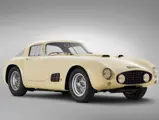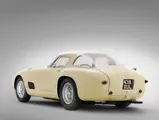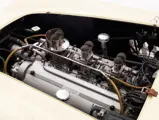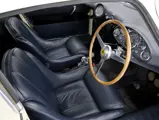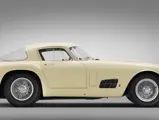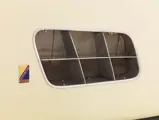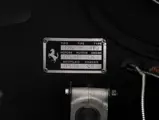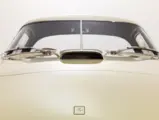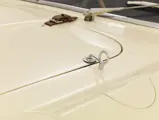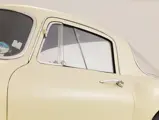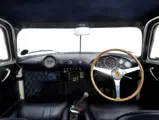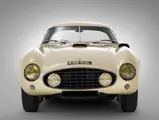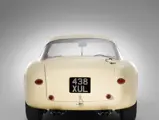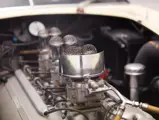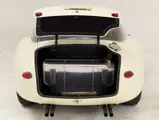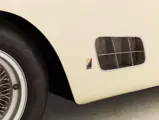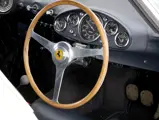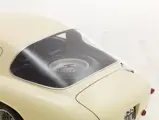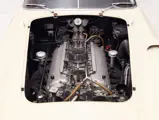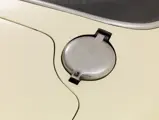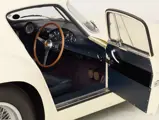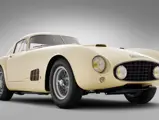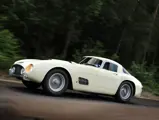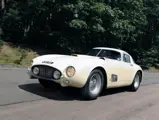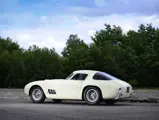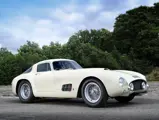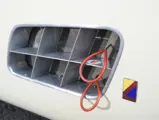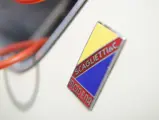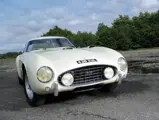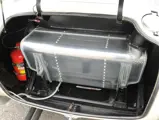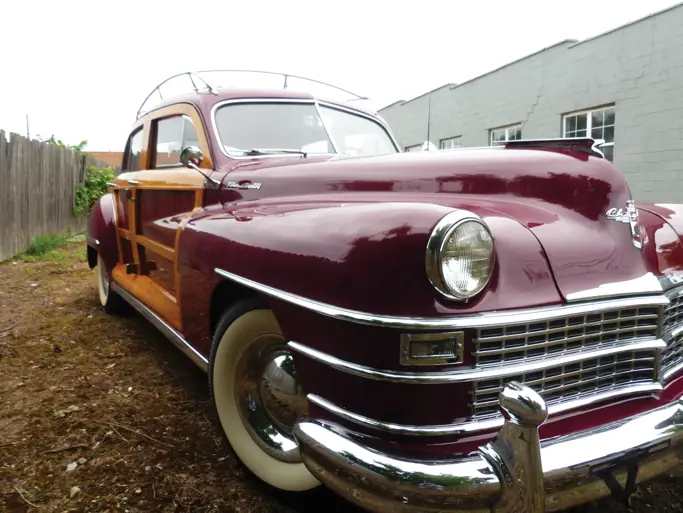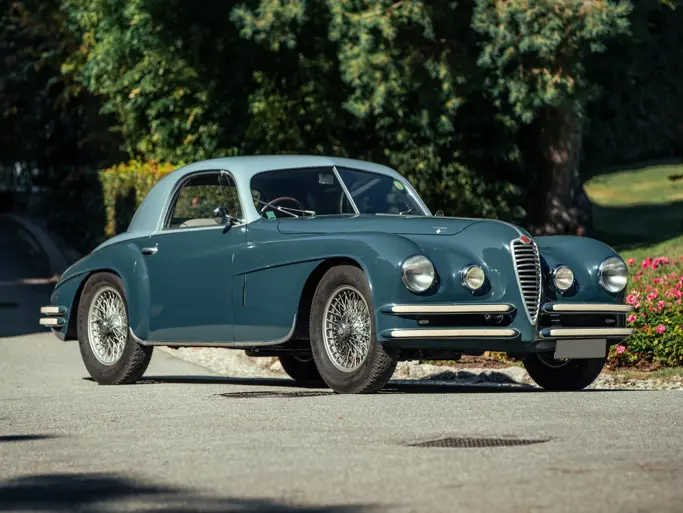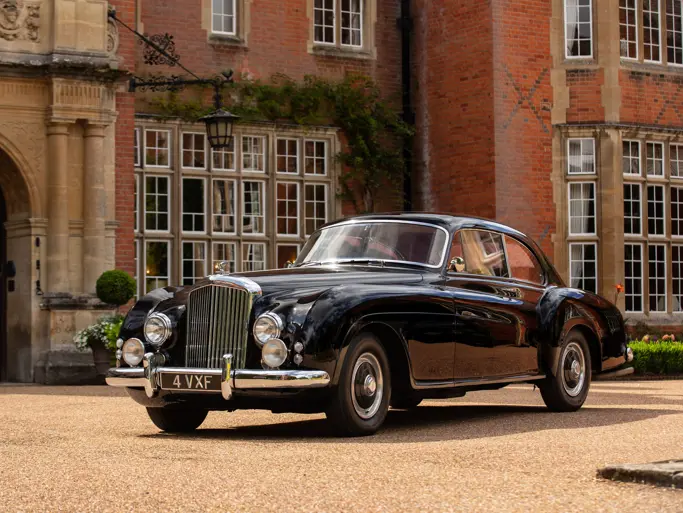Monterey 2012
1955 Ferrari 410 S Berlinetta by Carrozzeria Scaglietti
{{lr.item.text}}
$8,250,000 USD | Sold
 | Monterey, California
| Monterey, California
{{internetCurrentBid}}
{{internetTimeLeft}}

340 bhp 4,962 cc overhead cam V-12 engine with triple Weber 42 DCF/3 Weber carburetors, five-speed manual rear-mounted transaxle, independent front suspension with coil springs, rear De Dion suspension with trailing arms and transverse leaf springs, and four-wheel drum brakes and tubular steel frame. Wheelbase: 95.3"
• Striking, one-off Scaglietti Berlinetta coachwork
• Specially built for Ferrari SEFAC board member Michel Paul-Cavallier
• Ex-Pierre Bardinon; Mas du Clos Collection for thirty-five years
• Close relative of the 1954 Le Mans-winning 375 Plus
• First appearance of the 4.9-liter Superamerica engine
• Award-winner at the 2009 Concorso d’Eleganza Villa d’Este
• Ferrari Classiche certified and matching numbers
• A unique and very original, important Ferrari
Broad Ferrari histories often give short shrift to some of the marque’s most fascinating early sports racers, many of which occupy truly unique cross-sections of Maranello design and competition history. Such is the case with the 410 Sport, of which only four examples were built in 1955, with the specific intent of winning the notorious Carrera Panamericana road race. Initiated in 1950, in demonstration of Mexico’s recently completed section of the Pan-American Highway, the Carrera quickly gained a reputation for danger, as the rugged terrain left little room for error and resulted in numerous crashes and driver fatalities.
As the final contest in the inaugural season of the Sportscar World Championship, the 1953 Carrera Panamericana was embraced by European manufacturers like Ferrari, who quickly recognized the opportunity to market to American clientele, which the Texas-to-Chiapas race offered. After a dominating defeat by Lancia in 1953, and quite satisfied with its recent one-two-three finish at the 1954 Le Mans with the 375 Plus model, Ferrari declined to enter a factory-sponsored car in the 1954 Carrera. At least two of the winning 375 Plus cars were entered in the Mexican race by private teams, however, the sponsorships were arranged by Luigi Chinetti, and their divergent fates were emblematic of the challenges posed by the Panamericana. While Scuderia racer Umberto Maglioli drove one 375 Plus to victory in the 1954 Carrera, Jack McAfee crashed the actual Le Mans-winning car, which had since been purchased by John Edgar, in an accident that proved to be fatal to co-driver Ford Robinson.
Recognizing that the Carrera’s uneven road surfaces were intrinsically problematic for its sports racer designs to this point, Ferrari sought to devise a car that could specifically neutralize the Panamericana’s more daunting elements. Though the 375 Plus’s Formula One-derived, 60-degree long-block Lampredi V-12 was deemed to be a good starting point for the powertrain, an all-new chassis was required to replace the 375’s high center of gravity and narrow track. The resulting Tipo 519C chassis significantly departed from previous convention, with a shorter wheelbase and a low-profile tubular space-frame of unusual width. Sergio Scaglietti designed and built the coachwork, which provided the first glimpse of the general shape that would soon evolve into his vaunted Testa Rossa.
The bore and stroke of the Lampredi V-12 were increased to displace 4,962 cubic centimeters, resulting in the now revered 4.9-liter Tipo 126 engine that debuted in the Superamerica chassis displayed at the Paris Motor Show in October 1955. For use in the 410 S, the motor was dubbed the Tipo 126C to designate competition use and received an F1-style twin-plug ignition that contributed to developing 380 hp, unprecedented power for a Ferrari sports racer. This ignition configuration helped guarantee even combustion, a factor that was particularly important given the impure fuel that was provided during the Carrera Panamericana’s grueling five-day course.
With such specific intent to win the Mexican road race, it is little surprise that Ferrari designated the 410 S chassis numbers with CM (standing for Carrera Messicana), the four cars being numbered 0592 CM, 0594 CM, 0596 CM, and 0598 CM. Ironically, despite its unique design brief to win the Carrera Panamericana, the 410 S never actually campaigned in the race, as the tragedy of the 1955 Le Mans, as well as the Carrera’s mounting casualty record, led to the race’s prolonged cancellation in 1955.
Interestingly, only two of the four examples of the 410 S were prepared for factory racing, 0596 CM and 0598 CM. These cars were subsequently entered in the 1000 Kilomenters of Buenos Aires in January 1956, where Peter Collins drove one car to the fastest race lap, while the other car was piloted by Juan Manuel Fangio. Both cars were equipped with twin-plug ignition, and despite the promising start, the rear transaxles could not endure the 4.9-liter engine’s raw power, and both cars retired early. Regardless of the competition setback, the Tipo 126 engine sealed its renown a month later with the debut of the first completed Superamerica road car at the Brussels Motor Show of February 1956. 0596 CM and 0598 CM were quickly sold by the factory and went on to great success on the American sports car racing circuit, with one of them being bought by John Edgar and driven by Carroll Shelby.
Conversely, 0592 CM and 0594 CM were imagined as more restrained companions to the factory cars and were equipped with single-plug ignitions that mellowed power output to 345 hp. While 0592 CM received open spyder coachwork similar to the factory racers, 0594 CM was truly unique in that it was clothed with one-off berlinetta coachwork loosely based on the design of Pininfarina’s 375MM competition coupe. Transferring that basic shape onto the 410 S’s lower chassis and wider profile, the Scaglietti body marvelously reinterpreted the classic look with a more pronounced nose. 0592 CM is incredibly rare in this respect, as it is surely one of a small handful of early Ferrari berlinettas entirely designed and built by Scaglietti, as declared by the Scaglietti and Co. badge that adorns the fenders.
While Ferrari’s choice to finish 0594 CM as a closed car may seem odd in light of the 410 Sport model’s competition brief, it makes more sense given the identity of its first owner, Michel Paul-Cavallier. Mr. Paul-Cavallier was an industrialist who served on the board of directors of SEFAC, Ferrari’s corporate umbrella for racing during the 1960s, and his order was likely a reflection of his unique executive position and pride in the Scuderia’s accomplishments. Finished in ivory paint with a blue interior, 0594 CM completed assembly in July 1955 and was shortly thereafter delivered to Mr. Paul-Cavallier himself.
He kept 0594 CM for many years, until 1964, when it was purchased by French racing driver Hugues Hazard, nicknamed “Tutut” by his friends. Tutut was an experienced racing driver who competed in the Tour Auto, the Monte Carlo Rally, and the Coupes des Alpes, as well as numerous hill climbs. It was in 1965 when he entered 0594 CM in the Course de Cote de Belleau, taking to the start with race number 95. After one year, the car was acquired by Parisian resident and well-known Ferrari collector Pierre Bardinon, where it became part of the Mas du Clos Collection, one of the foremost Ferrari collections in the world.
Mr. Bardinon restored the car and retained possession for thirty-five years. During this period of fastidious care, 0594 CM appeared in several magazines and prestigious events, including a depiction in Peter Vann and Antoine Prunet’s 1987 book Fantastiques Ferrari and an appearance at the Chapal leather stand (owned by M. Bardinon’s son) at the 1996 Retromobile in Paris.
In June 2001, 0594 CM was purchased by John Bosch, of the Netherlands, another well-known collector and the owner of Barron Racing. Mr. Bosch soon commissioned a sympathetic restoration by Terry Hoyle Racing Engineers Ltd., of England, which addressed every mechanical and cosmetic aspect. All mechanical systems were comprehensively addressed, including a full engine rebuild. Mr. Hoyle restored the car to its original competition specifications while delivering cosmetic presentation worthy of the most distinguished concours d’elegance. After the restoration’s completion in May 2002, Mr. Bosch capitalized on 0594 CM’s astounding condition by participating in the 2002 Mille Miglia and exhibiting the car at the Ferrari Days meeting in Spa-Francorchamps later that month.
Acquired by the current owner, 0594 CM has since been displayed at the 2009 Concorso d’Eleganza Villa d’Este, where it received the Honor of Mention in its class. Still exhibiting the immaculate merits of its originality, it has never been damaged nor have any of its mechanical components been replaced or tampered with, as confirmed by the Ferrari Classiche certification. This one-of-a-kind 410 Sport Berlinetta claims unique genetic links to several of Ferrari’s most acclaimed models, included the Le Mans-winning 375 Plus and the vaunted Superamerica road car.
The availability of this ultra-rare, one-off Scaglietti-bodied berlinetta will doubtlessly draw the attention of the most ardent Ferrari collectors, as 0594 CM offers its next owner entrance to the world’s finest vintage rallies, FCA events, and discriminating concours d’elegance, and it has the potential to make an especially exciting North American premiere. It is a “Prancing Horse” of inestimable cachet, whose offering here constitutes a once-in-a-lifetime opportunity for the serious tifosi.

